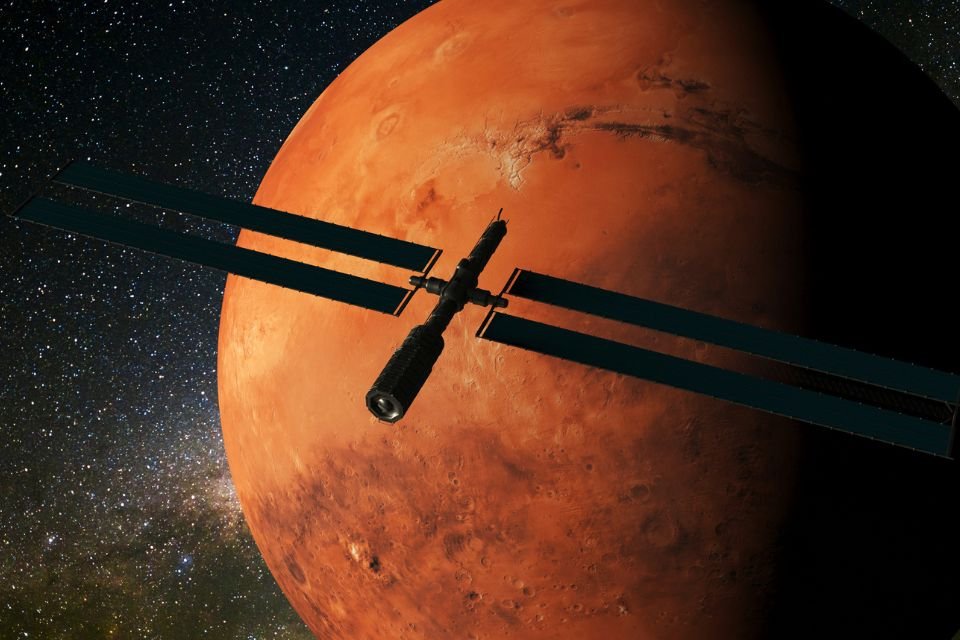A few days ago, This The United States National Aeronautics and Space Administration (NASA) has released two new photos of Mars, taken by the Martian Atmosphere and the Volatile Evolution probe (Maven).). The big difference is that this time, these are images ‘photographed’ with ultraviolet light technology and show some interesting details of the red planet..
Launched in November 2013, the MAVEN probe captured two images of different regions of Mars’ orbit between 2022 and 2023, at a time when the planet was approaching opposite ends of its orbit – the probe reached Mars in September 2014. generated using the probe’s Ultraviolet Imaging Spectrograph (IUVS) data.
According to information from NASA, the probe can measure ultraviolet waves between 110 and 340 nanometers outside the visible range. In the image, atmospheric ozone is represented in shades of purple, while clouds and haze are shown in white or blue; The surface of Mars is characterized by shades of beige or green.
Ultraviolet images of Mars
NASA explains in a statement that the first image was ‘photographed’ during the summer in the planet’s southern hemisphere in July 2022, showing the polar cap and a shrinking ice cap due to summer. The second image, taken in January 2023, shows the northern hemisphere and shows how seasonal changes in the region are causing abundant clouds.
“The Argyre Basin, one of the deepest craters on Mars, appears filled with atmospheric haze in the lower left corner (depicted here as pale pink). The deep canyons of Valles Marineris appear cloud-filled in the upper left corner (beige in this image),” NASA explains in a statement.

Maven was sent to collect data from Mars and observe the upper atmosphere, including data that could help scientists discover the true history of the red planet. In September 2024, NASA to celebrate tenth anniversary of probe’s arrival on Mars.
“Ozone, which appears magenta in this UV image, was accumulated during the cold polar nights of the northern winter. It is then destroyed in the northern spring by chemical reactions with water vapor, which is confined to the low altitudes of the atmosphere at this time of year.
Source: Tec Mundo
I’m Blaine Morgan, an experienced journalist and writer with over 8 years of experience in the tech industry. My expertise lies in writing about technology news and trends, covering everything from cutting-edge gadgets to emerging software developments. I’ve written for several leading publications including Gadget Onus where I am an author.













